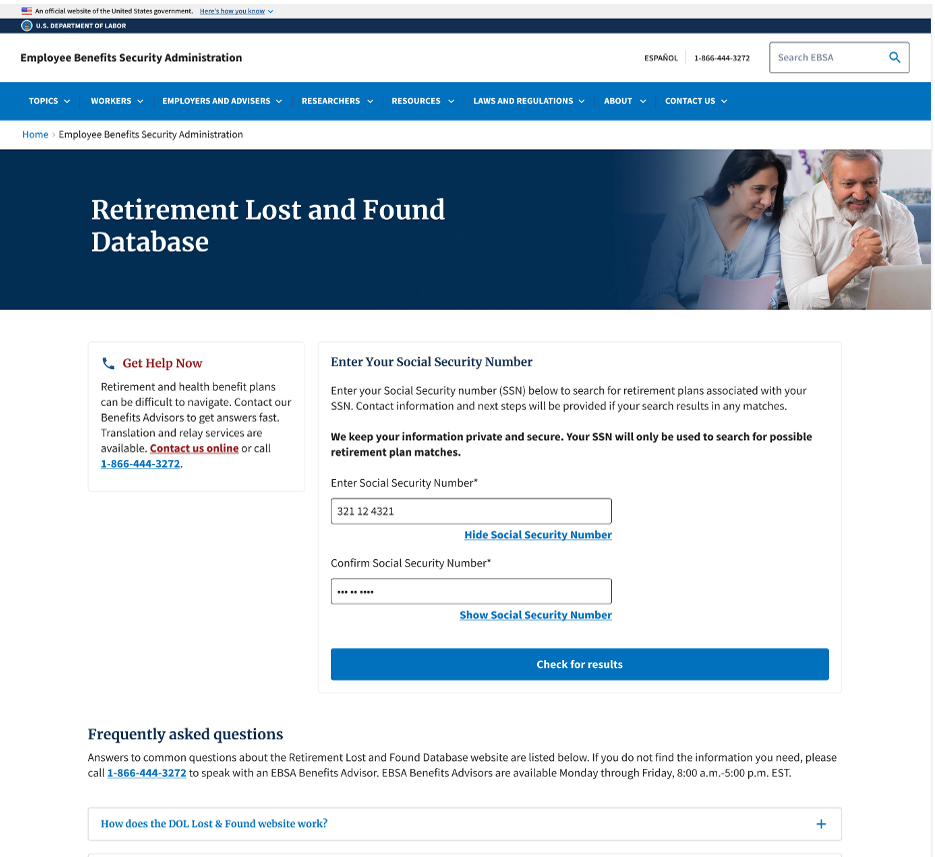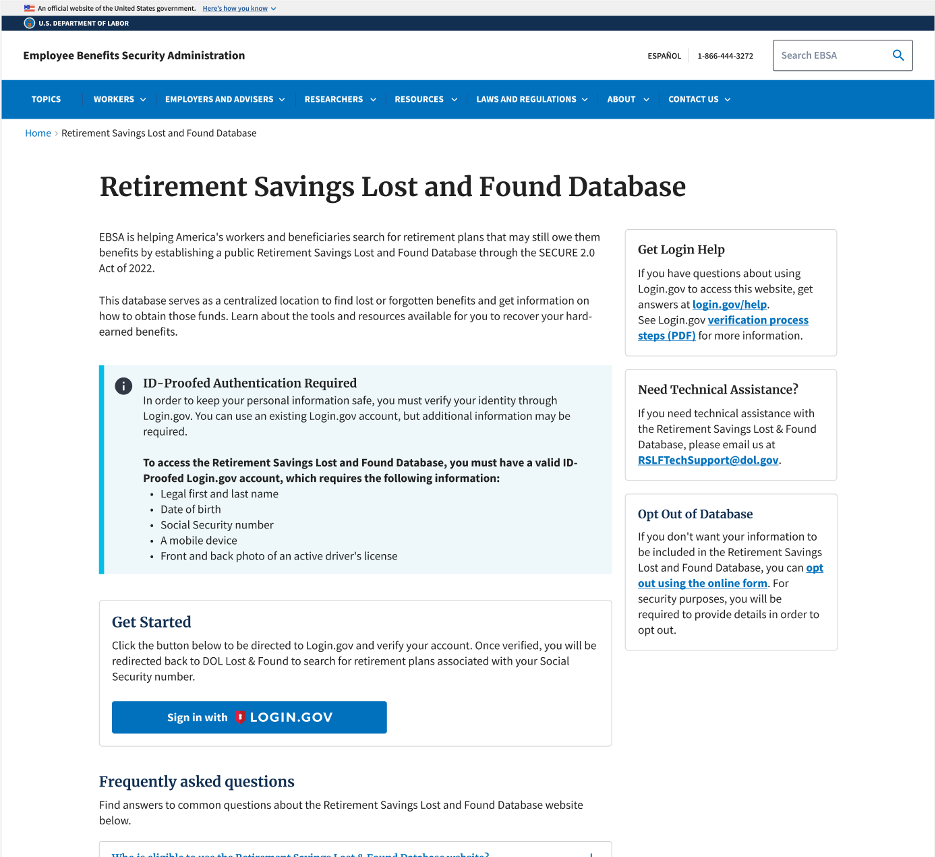
18 Jul A case study where trust was critical to recovering $7B in retirement benefits
The Employee Benefits Security Administration (EBSA) is part of the U.S. Department of Labor (DOL). Most Americans haven’t heard of EBSA or its congressional mandate to help recover more than $7 billion in missing retirement benefits.
My role in this story was as the Director of CX at WebFirst, a federal contractor for software development. As the Practice Director, I oversaw the project planning, timelines, and budget. I guided and approved the user testing approach and creative-directed the design outcome.
RESEARCH INSIGHTS
As in many projects, a solution for the portal was proposed prior to understanding the problem space. It was generally accepted that Americans would appreciate a service that helped them find their missing retirement funds, yet the technology-driven solution meant gating the service with a new, SECURE 2.0 login.
An immediate barrier to entry, the new identify verification system had the potential to discourage users. Especially in the context of a new service – and especially when Americans’ levels of trust in government are extremely low.
Prototyping
We lacked the baseline for understanding users’ levels of comfort with the login expectations. I directed our Sr. Designer on DOL to first create a prototype of the prescribed solution. We would need the user testing feedback from this design to make our case for an improved approach.
Testing
My team’s Lead Researcher proposed a focus-group style study. We wanted to hear as much from users as possible: about their perceptions and feelings towards the service.
I supported this qualitative research approach. We organized a series of four small focus groups, each with three participants (who met predefined recruiting criteria).
To prompt the conversation, our moderator’s questions probed for emotional responses. We asked empathy-based questions with sincere curiosity like:
- “How do you feel about using this search to look for potential retirement plans?”
- “Anything excite you about this service?”
- “Can you explain what about this website makes you feel it’s trustworthy and want to use it?”
- “What, if anything, about this website makes you feel doubtful or not want to use it?”
Findings showed that it took users too long to understand what the service offered. Once they understood the intention, they appreciated the extra security layers.
Users believed the marquee (hero) image was, “too large” and questioned what they would do if their searches were unsuccessful and yielded zero results.
I need more information to feel safe. Many scams exist with email, text, and mail.
Setting up a Login.gov account may be too complicated on a mobile device.
OUTCOMES
A second round of user research validated that the more tightly integrated Login.gov steps improved perceptions of credibility.
Improved design for service’s first step
Users felt the design more seamlessly integrated the service within DOL.gov site’s design. They reported that it was, “less jarring and disjointed.”
Provided additional links and supplemental information.
A new FAQ section provided additional links and information. This set expectations and increased users’ levels of trust in the site.
The majority of participants highlighted the ease of use, familiarity with the Login.gov process, and excitement about the potential to find funds of their own.
I know doing the Login.gov step is tedious, but it makes me feel safe.
I already have a Login.gov account, so that’s easy. This (Login.gov) tells me it’s safe.


